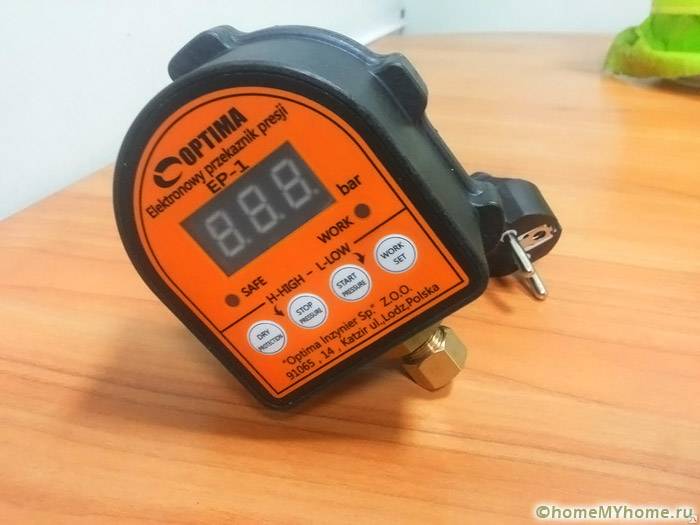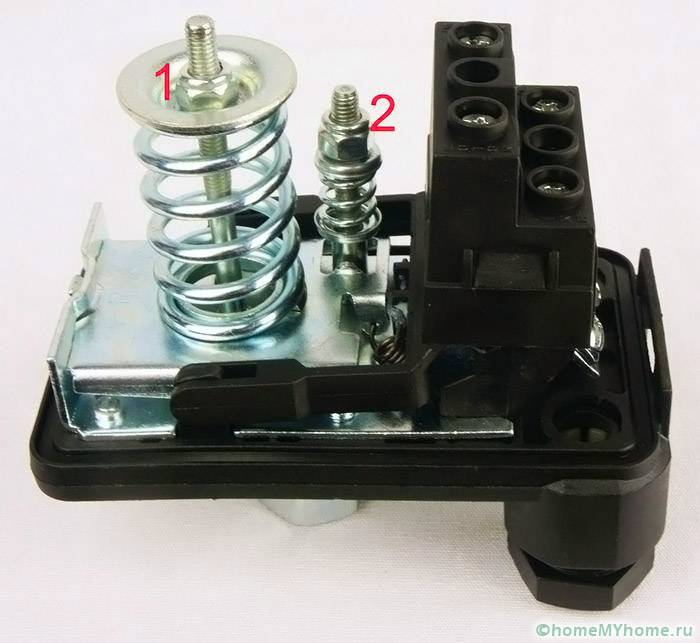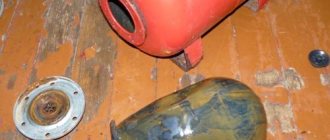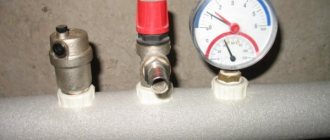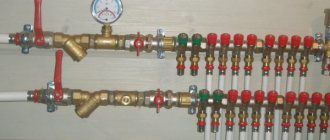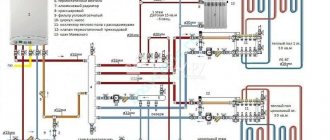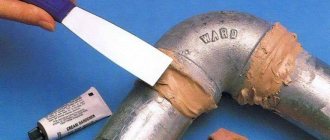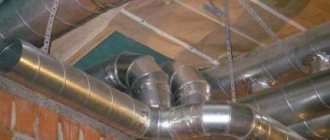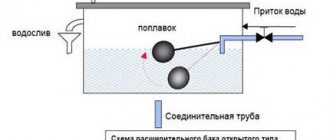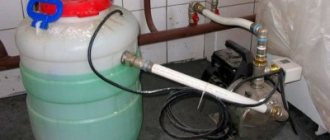Water pressure switch is an important component of the water supply system The device of water supply systems is not a simple process, and doing it yourself is not as easy as it might seem at first glance. When arranging, you need to install a pump, as well as a water pressure switch, which will allow you to regulate the process of supplying fluid through the pipes at home. The adjustment of the pumping station is important, and this is a small unit that helps to turn on the pump when the pressure in the system decreases, and turns it off when it reaches the maximum level.
Purpose of the pressure switch
In order for the correct operation of the water pumping station (reckless), it is required to install and configure a hydraulic accumulator, as well as a relay, for example, RDM Type PM5 with a Whirlwind pump. Even if home-made equipment is installed for the water supply system of a house in the country, a lot is required.
High-quality operation of the water station is ensured by a properly configured hydraulic accumulator and pressure switch
Namely:
- Accurate calculation of all parameters;
- Taking into account the peculiarities of water supply;
- Competent and professional approach.
These 2 units must be connected to the pump, and the relay should be located in the middle and closer to the accumulator. There are relay models that can be mounted directly to the surface of the pump housing, even submersible. The installation of the water supply system must be correct, and therefore it is worthwhile to familiarize yourself with the principle of operation of each component before assembling it.
A hydroaccumulator is called a container, inside which an elastic pear and a membrane are installed, dividing it in half.
The pear contains air with a specific pressure, and the membrane contains water. What pressure is set in the pear and how much water enters the membrane directly depends on the amount of inflated air. The more it is, the higher the pressure in the system will rise. As a rule, only half of the water is pumped into the tank cavity. For example, if, according to the manufacturer's data, 100 liters can fit in a hydraulic tank, then there will be 40-50 liters. The optimal pressure in the water supply system, especially when connected to household appliances, is 1.4 atm -2.8 atm, and in order for it to be maintained in this state, a device such as a controller or relay must be installed.
Setting the pressure switch and adjusting the air pressure in the accumulator.
Pressure switch - an element that controls the operation of a pumping station (for example AQUAJET or AQUAJET-INOX) and which makes it possible to work in automatic mode. The pressure switch has several characteristics:
- Switch-on pressures (Pon) Is the pressure (bar) at which the pumping station is turned on by closing the contacts in the pressure switch. Sometimes the switch-on pressure is also called the “bottom” pressure.
- Shutdown pressure (Poff) Is the pressure (bar) at which the pumping station is turned off by opening the contacts in the pressure switch. The shutdown pressure is sometimes also referred to as the “top” pressure.
- Pressure drop (ΔP) Is the absolute difference between the switch-off pressure and the switch-on pressure (bar).
- Maximum cut-off pressure Is the maximum pressure (bar) at which it is possible to shut down the pumping station.
Any pressure switch has factory settings and, as a rule, they are as follows: Switch-on pressure: 1.5-1.8 bar Switch-off pressure: 2.5-3 bar Maximum switch-off pressure: 5 bar
How it all works: Let's say the pumping station is connected (about this in the article "Preparing the DAB pumping station for operation"), and the entire system is filled with water. After opening any tap (shower, sink, etc.) and the start of water intake, the pressure in the system will begin to drop smoothly (thanks to the diaphragm tank), which can be easily tracked by the pressure gauge. All this time, water is supplied to the consumer from the hydraulic tank. When the “lower” switch-on pressure is reached (it can also be monitored by the pressure gauge at the moment the pump is switched on), the contacts inside the pressure switch will close and the pump will start. The rest of the time the water is drawn, the pump continues to work, supplying water directly to the consumer. After the completion of the water intake (all taps are closed), the pump still continues to work, only now the water is not supplied to the consumer, but is pumped into the hydraulic tank (since it has nowhere else to go) and the pressure gradually increases. When the shutdown pressure is reached (you can easily track it on the pressure gauge when the pump stops), the contacts inside the pressure switch open and the pump stops. At the next drawdown, the cycle is repeated. It's pretty simple.
But what if the factory settings of the pressure switch are not very comfortable? For example: on the upper floors, the pressure drops very noticeably, or the water purification system requires at least 2.5 bar at the inlet, while the pump turns on only at 1.5-1.8 bar.
Water pressure switch device
The hydraulic part is located on the rear side of the hydraulic relay, and the outlet can be with an external thread or an American nut. The second option is considered more convenient, since it allows for easier installation.
Having studied the device carefully, you can install the water pressure switch in the most convenient way.
In the first case, you will need to find special adapters with a union nut of a certain size.
It is possible to screw the product onto the thread, which is not always suitable. Electrical connectors are located on the rear side of the case, and a terminal block for connecting wires is installed under the cover cavity.
The hydraulic regulator is divided into 3 parts.
- Electric;
- Mechanical;
- Hydraulic.
The first includes a group of contacts that close and open, which is required to connect and disconnect the pump. The hydraulic part includes a diaphragm, which acts on a metal base and a spring, small and large, whereby the pressure inside the pump is regulated, as well as switching on or off.
The subtleties of adjusting the water pressure switch for the pump
To set a specific value at the pressure level, it is necessary to correctly adjust the control device. This will require a number of actions. Fill the tank until the pressure gauge shows the maximum value.
The adjusted water pressure switch allows the water system to run smoothly
Further:
- The station turns off.
- The relay housing opens.
- It is necessary to gradually loosen the small nut until the internal mechanism is triggered.
- The rotation is clockwise, which increases the pressure level.
- If you turn against, then it decreases.
- To establish the minimum value, a gradual drainage of water is required by opening the tap.
When the pressure gauge reaches a certain level, the water drain stops. To adjust the lower pressure, the large nut is rotated in the same way until the contact is triggered. The principle of operation of the device is simple, since by setting a small range between the upper and lower boundaries, sufficient pumping of water by the pumping station will be carried out, by creating a constant average level of the indicator. The system works evenly, which allows you to get the optimal water pressure for comfortable use.
Stages of adjusting the pressure switch of the pumping station
To set up the operation of the pumping station, the connection diagram is checked for compliance with the norm, for which instructions from the manufacturer can be used. You also need to install a reliable pressure gauge that can give accurate readings. It is installed in the water supply system at a short distance from the relay. To regulate the relay, you will need to tighten 2 springs, namely a large and a small one. Experts recommend contacting professionals to connect and check the device's functionality.
A high-quality pressure gauge installed near the water pressure switch will be able to give accurate readings
This will allow:
- Be confident in serviceability;
- Get a quality guarantee;
- If you have any problems, get free service.
The automatic pressure regulator does not require intervention and works, that is, it turns on and off, if necessary. It is worth noting that it is not recommended to install an electronic device to regulate the water supply, since when the electric voltage decreases, it will not work to pump water quickly. There are a number of other points that you should familiarize yourself with before carrying out the process of submerging the pump in the well and connecting the pressure control relay. Not all models allow changing the delta, and therefore, when purchasing, you need to pay attention to the moment.
The relay can be covered with a moisture-proof and dust-proof housing, which allows the product to be installed directly on the pump surface if a suitable outlet is available.
An idle relay can be installed on a borehole pump, which has a separate housing, however, there are models of a combined type regulator. Idling protection is needed to prevent pump breakdown in the absence of water in the well. Such a device is best suited to a submersible pump.
Types of pressure switches
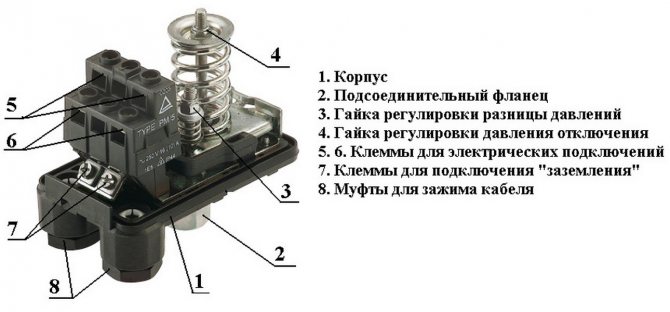
Pressure switch device
There are miniature and large enough devices. They also differ in the equipment with additional functions. A classic relay for a hydraulic accumulator includes two working units:
- hydraulic;
- electric.
The first is intended for the interaction of the device with the liquid supplied to it. It consists of a stem and two springs. Due to the latter, the optimal pressure parameters are adjusted. The main task of the latter is to connect conductors to electricity. It is a metal terminal block with clamping screws. Depending on the position of the hydraulics, the terminals open and close.
On the market or in specialized stores, you can purchase the following types of pressure switches:
- with dry running sensor;
- mechanical;
- equipped with a built-in pressure gauge;
- electronic.
Electronic relays are equipped with additional modules that open and close contacts. They also have built-in electronic pressure gauges with a digital display. The dry-running sensor warns the pumping station to work "idle" if, for example, the water level has dropped, the intake hole is clogged, or the supply pipe has been damaged.
The operation of the pressure switch for the accumulator
In any pump, the pressure is adjustable, and it is required to set the maximum and minimum parameters in the cavity of the accumulator tank, if we are talking about a hydraulic accumulator. It is in this way that the relay turns off and turns on the operation of the unit.
The pressure switch turns the accumulator on and off
It is possible to increase or decrease the pressure of the hydrophore, depending on:
- The volume of fluid consumed;
- Consumption frequencies;
- Pumping unit capacity.
As for the characteristics of the pump, they can be found in the operating instructions or technical data sheet.The standard value, due to which the operating state of the relay is selected, is considered to be 1.0-5.0 atm. An adjustable mechanical relay or any other has a starting pressure of 1.5 atm, and the operating range of the engine in the pump is 2.5 atm.
The maximum pressure at which the starting device of the relay is triggered and the pump is turned off is 5 atm.
If during operation or installation the settings were knocked down, then you need to independently raise the upper edge to a certain level, and also select the low pressure level. To do this, as noted earlier, you need a pressure gauge. The installation of the control and measuring device is carried out on the collector in the accumulator, and the correction is carried out according to the readings on the pressure gauge after the pump is turned off. The creation of pressure drops is carried out by opening the tap at the point of water withdrawal, which is located closest to the accumulator.
To set up the pressure control of the pressure on the accumulator, you need the presence of the pressure itself and you do not need to disconnect the pump from the electricity network. Due to the pump, the cavity of the storage tank is filled and the pressure in the water supply system rises. As soon as the controller is triggered and the engine is turned off, the plastic cover on the case is removed and a release of the tension on the small spring mechanism is required.
Pressure switch setting
There are times when the default sensor settings do not suit pump users. For example, if you open a tap on any floor of a building, you will notice that the water pressure in it decreases rapidly. Also, the installation of some systems that purify water is not possible if the compression force in the system is less than 2.5 bar. If the station is set to turn on at 1.6-1.8 bar, then the filters will not work in this case.


Usually, setting up a pressure switch with your own hands is not difficult and is performed according to the following algorithm.
- Record the pressure gauge readings when the unit is turned on and off.
- Unplug the station power cord or switch off the breakers.
- Remove the cover from the sensor. It is usually secured with 1 screw. Under the cover you can see 2 screws with springs. The larger one is responsible for the pressure at which the station engine starts. Usually near it there is a marking in the form of the letter “P” and arrows are drawn with the signs “+” and “-” near them.
- To increase the compression force, rotate the nut towards the “+” sign. Conversely, to lower it, you need to turn the screw towards the “-” sign. Turn the nut one turn in the desired direction and start the machine.
- Wait for the station to turn off. If the pressure gauge readings do not suit you, then continue to turn the nut and turn on the device until the pressure in the accumulator reaches the required value.
- The next step is to configure the moment when the station is turned off. A smaller screw with a spring around is intended for this. There is a “ΔP” mark next to it, as well as arrows with “+” and “-” signs. Setting the pressure regulator to turn on the device is carried out in the same way as to turn off the device.
On average, the interval between the compression force at which the sensor turns on the station engine and the value of the compression force when the unit stops is in the range of 1-1.5 bar. In this case, the interval can increase if the shutdown occurs at large values.
Adjustment of the pressure switch and determination of the system response thresholds
A relay is an automatic device or, in other words, a device that blocks a valve that creates a process for supplying water. The pump has 2 switching thresholds - lower and upper. Each of them depends on the pressure in that part of the accumulator where air is present. The minimum pressure is considered to be a level of 0.1-0.2 atm and above.
Having studied the technical characteristics and operational properties of the pump model, you can correctly adjust the water pressure switch for high-quality system operation.
If there is a pressure of 1.4 atm inside the container, then the shutdown threshold will be 1.6 atm. These parameters are considered optimal for the operation of the automation.
It is imperative to take into account the parameters of the pump, which also has 2 values in the form of a lower and upper threshold. Based on a number of indicators, thresholds are selected. It is worth noting that the choice of the upper threshold at which the pump is turned off is carried out automatically. The relay initially from the factory has a certain delta of the difference, adjusted at the time of manufacture. In general, this difference is 1.4-1.6 atm. In other words, if a shutdown at 1.6 atm was manually set, then the upper shutdown threshold is automatically set to 3.0 atm.
If the water supply system is connected to a large number of taps, then several atmospheres can be added to the upper threshold for the maximum permissible value, but subject to a number of restrictions
Namely:
- The parameters of the controller are taken into account.
- All models have certain technical characteristics and performance properties.
- As a rule, the upper limit of the pressure in the pump is set from the manufacturer and the pump should be turned off until it is reached on average for 0.2-0.4 atm.
- If the upper threshold is 3.8 atm, then it will turn off when it reaches 3.6 atm.
For a long and trouble-free operation of the pump, it is best to make the difference between the thresholds as large as possible, since constant overloads negatively affect the operation. The peculiarity of the relay is that it does not need to be cleaned, which means that disassembly is not needed, and if there is a weak pumping of water, then you need to pay attention to the operation and clean the pump.

